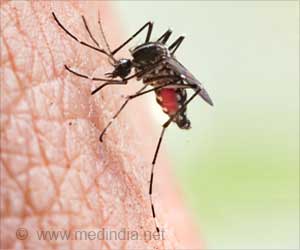Nestled high in the Bolivian Andes, the famed Lake Titicaca is being strangled by city-fed pollution that is driving away local people who draw sustenance from its mythical waters.
Nestled high in the Bolivian Andes, the famed Lake Titicaca is being strangled by city-fed pollution that is driving away local people who draw sustenance from its mythical waters.
At a breathtaking 3,800 meters (12,500 feet) above sea level, at Titicaca's Cohana Bay, the Katari, Seco, Seque, Pallina and Jalaqueri rivers deposit the garbage and contaminants they pick up from cities along their banks.On the shores of the bay sits Cohana, a small village of 350 families whose livelihood -- and water supply -- is suffering under the pollution onslaught.
Titicaca, the world's highest navigable lake, which straddles the border between Bolivia and Peru, is a place venerated by the ancient Incans who ruled throughout South America from the 13th to the mid-16th centuries.
Tradition has it that the lake was created during a great flood, brought on by Apu Qullana Auki, the god who created the universe, to punish mankind.
After the rains stopped, Manco Capac and Mama Ocllo, the "Incan Adam and Eve," were created there and sent out to repopulate the world.
But Cohana Bay is far from a Garden of Eden when, during the dry season, the waters recede to reveal tons upon tons of bottles, cans, plastic bags, medical refuse, tattered clothes and a host of unmentionables that litter the shores.
Advertisement
"Biological activity is directly affected by the water's lack of oxygen: fish that generally were everywhere now are dead," the study said.
Advertisement
Rosendo Mendoza, a senior local figure who represents the Aymara-speaking villagers to the Spanish-speaking authorities, remembers seeing several teams come and go investigating the pollution in Titicaca.
Some were regional, others were national and there was even one group of experts from Peru. But nothing ever came of it, he said.
Mendoza gets his boat ready to pole it across the lake to an offshore island meadow of grass where, like his fellow villagers, he tends a heard of cows that provide Cohana with its primary source of income: a white and salty cheese known as Queso Casero.
A few hectares (acres) of the island are being tilled for farming, while on the rest, men and women are busy milking cows. On shore, others are processing the cheese that sells in La Paz, about 80 kilometers (50 miles) away, at 35-55 cents (23-40 euro cents) per portion.
A flock of pink flamingos breaks into flight. There were many more in the old days, Mendoza said.
Modest and peaceful, the lifestyle of the people of Cohana is changing.
Pollution has filtered into the ground and the water. Fifteen years ago, people drank straight from the lagoon, but now they draw water from two wells.
"The problem is that because of the pollution our cows are coming down with liver fluke, a very dangerous liver parasite," Mendoza told AFP.
He is well acquainted with the disease: the animals are infected with the parasite which makes their livers swell. They do not die but they lose weight and give less milk, which means less cheese and less money for the villagers.
"My cows have been producing less milk in the past few years, because they are eating badly," said local resident Mariagualpa Mamani.
The people of Cohana seem resigned to their fate, and as the ground dries up and the cows get thinner, they have begun to look elsewhere for their livelihood.
Hundreds have already left the village on foot for Buenos Aires, 2,250 kilometers (1,400 miles) to the southeast, to look for work.
Source-AFP
LIN/C





